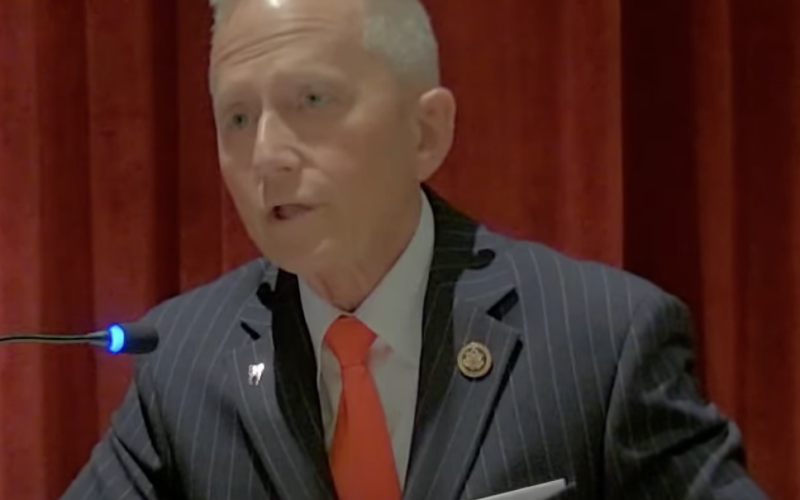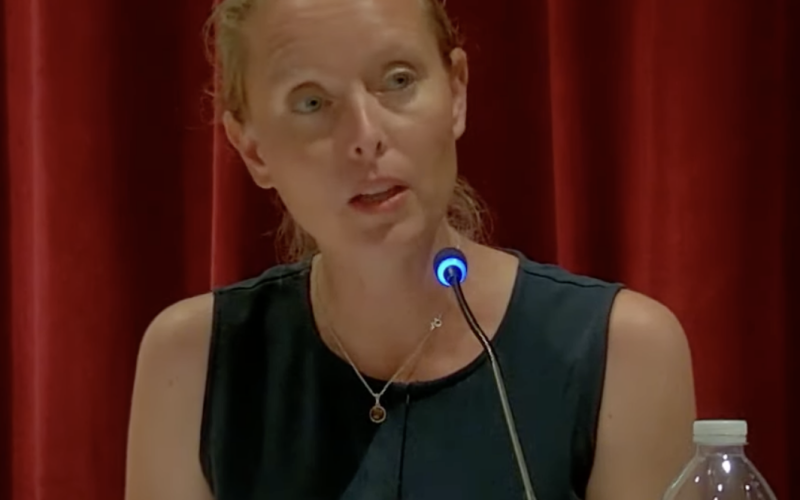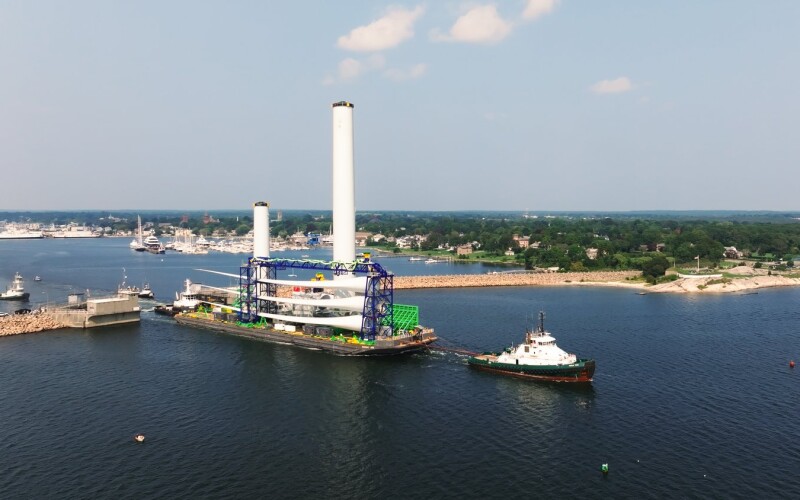Vineyard Wind was allowed Aug. 13 to restart some construction work installing turbine towers and nacelles, one month after the turbine blade breakup that disabled a GE Vernova generator and scattered fragments of fiberglass and foam on Massachusetts beaches.
The federal Bureau of Safety and Environmental Enforcement (BSEE) issued an “updated suspension order” to allow some work to resume, Nantucket municipal officials reported. The revised order still prohibits blade installation or power production at the 24 turbines installed so far on the planned 62-turbine, 806-megawatt rated array.
A ”controlled cutting” operation at the stricken AW38 turbine brought down remnants of the broken blade, with vessels and crews on land to collect debris, according to an email from Vineyard Wind released by Nantucket officials Tuesday afternoon.
“Vineyard Wind and GE Vernova are currently assessing next steps to complete any additional necessary cutting, secure and remove the debris on the turbine platform, remove the blade root, and address the debris on the seabed,” wrote Vineyard Wind representative Richard Smith.
BSEE decided Vineyard Wind could proceed with installing towers and nacelles based on a review that included an independent structural load analysis by the Norwegian maritime and energy classification society Det Norske Veritas. “Following examination of that analysis, BSEE concluded Vineyard Wind could safely proceed with tower and nacelle installation,” Smith wrote.
On Tuesday, the Foss Prevailing Wind, one of two 400’ barges that Foss Maritime uses to transport turbine components, departed the New Bedford Marine Commerce Terminal carrying several tower sections and one nacelle to the Vineyard Wind offshore site.
“The vessel will also carry a rack of three blades strictly to ensure the safest, most balanced composition for the transport,” Smith told Nantucket officials. “The blades will not be installed offshore at this time and will be returned by the Foss Prevailing Wind to the Marine Commerce Terminal later in the week.”
As Vineyard Wind continued its cleanup, offshore wind opponents gathered in Brigantine, N.J., at a meeting hosted by Rep. Jeff Van Drew, R-NJ, a fierce critic of the industry, its political support by the Biden administration and permits issued by the Bureau of Ocean Energy Management.
Within sight of Brigantine and other Jersey Shore towns, developers of the Atlantic Shores project plan turbines 1,048’ tall, “three times as tall as the (onshore) turbines you see driving into Atlantic City,” Van Drew told the audience. “Dozens of these turbines will be visible and possibly audible in Brigantine.”

Reports of broken blade pieces drifting ashore from Nantucket to Cape Cod are cited by Atlantic Shores opponents as proof of their fears that building turbine arrays starting 8.7 miles off the beaches endanger their quality of life and tourism industry.
“We saw what happened in Nantucket. God only knows what would happen when we get a cat (category) 3 or any hurricane,” said Van Drew. He predicted “a blizzard of fiberglass” if turbine blades break apart in a severe hurricane.
The Vineyard Wind incident is “offshore wind’s version of Three Mile Island,” said Amy DiSibio, a board member of ACK for Whales, a Nantucket-based group that sued in federal court attempting to stop Vineyard Wind construction.
“We’re about the appeal to the U.S. Supreme Court,” said DiSibio. She suggested the high court’s June ruling in a landmark case, Loper Bright v. Department of Commerce and Relentless v. Department of Commerce, could be an avenue for project opponents challenging BOEM and other federal agencies.
Lawyers with conservative legal activist groups brought the cases on behalf of fishermen who challenged a National Marine Fisheries Service rule that required them to carry onboard observers to monitor fishing, and pay costs for the observers contracted by NMFS, at up to $700 a day.
The court decision overturned the so-called Chevron doctrine, a precedent from then 1980s that held courts should “defer” to executive agencies’ reasonable interpretations of federal statutes.
In his opinion for the conservative majority, Chief Justice John G. Roberts Jr. declared the Chevron doctrine “fundamentally misguided,” and wrote that “courts must exercise their independent judgment in deciding whether an agency has acted within its statutory authority.”
Meghan Lapp, fisheries liaison at Seafreeze Ltd. In Point Judith, R.I., was involved in the fishermen’s successful Chevron appeal. She said BOEM’s shortcomings go beyond fishermen’s complaints about wind projects affecting their industry.
Lapp said the agency should be doing more to demand decommissioning bonds from wind developers, to ensure there’s money to dismantle turbine projects at the end of their projected service life.
Meanwhile the Biden administration has tightened its demands for decommissioning assurances from offshore oil and gas companies, with nthe rationale of protecting taxpayers from future cleanup costs, she said.





